
Camino de Costa Rica 2023 Journal
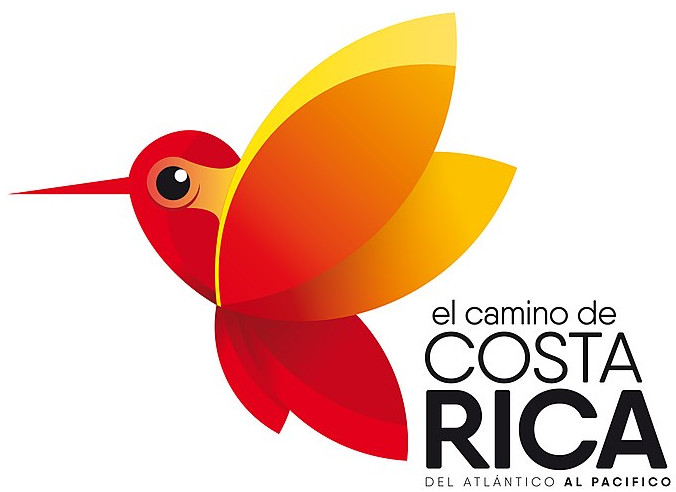
This page journals the Second Week of our hike across Costa Rica from the Caribbean Sea to the Pacific Ocean.
Go to main Camino de Costa Rica Hiking Info page.
Read the Journal of FirstWeek on the trail.
Read some Camino Advice.
Click photos below to view larger versions.
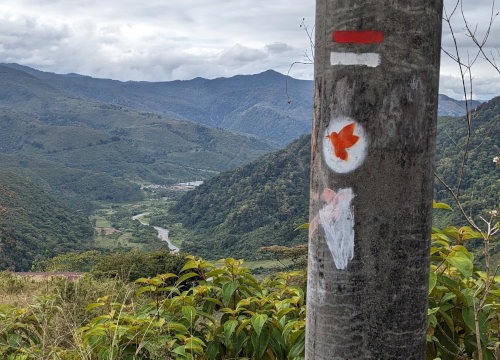
Finally, we got rain!!! The forecast keeps saying a high chance of rain but we've had none the first eight days. When we reached our lodge this afternoon, a drizzle started and we enjoyed watching it from our covered patio.
We've stayed at some great places on this 'trek' and tonight's lodging is the newest with very nice rooms with hot showers. Every rest stop has had wonderful, friendly, gracious staff or hosts making us feel welcome. Last night, we just asked "do you have ice?" for our soda we had with us. The hostess said "yes". 15 minutes later, a car pulled up and a guy ran up with a bag of ice. I have no idea how far he came or what it cost. So, we are now careful what we ask about!
Anyway, we had breakfast at 6 to get in a shuttle van at 6:30 and start hiking at 7:00. We have 10 people plus the driver in our van rides from the trailhead to our lodging. Some of the drivers are like bats out of hell and some of the vans are held together with piano wire and prayers. But, it all adds to the adventure.
Today's hike was somewhere over 20km but estimates range from 24 to 26. The actual distance we travel is 'around' the listed itinerary, but don't expect it to be very close some days - just hike until you get there. We had a serious long uphill over a mountain range followed by a long downhill into the next valley, the Orosi Valley. We finished in under 8 hours including a short brown bag lunch break right on the trail overlooking the wide valley below us, rather than at a restaurant. The beginning and end of our day was on paved road with the rest gradually degrading to a rocky path across the middle section.
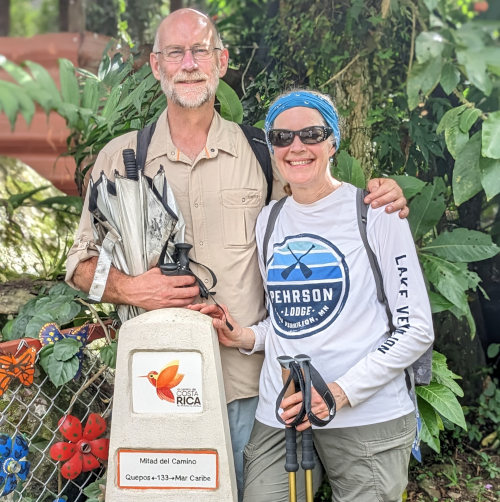
We passed the half way point today, as you can see on the trail marker. That makes it hard to figure out how we reach the Pacific in under 6 days, but we'll see how it goes. We still have not reached the highest point of the trail so there is more elevation to gain.

Being a Sunday, there were many people frolicking in the rivers we crossed to escape the heat of the day. On the more civilized last third of the hike, we also encountered a lot of bike riders, motorcyclists, cars, and even a pair of horse riders trotting down the road.
We have been pleasantly surprised to find that many of the places we stay will have our clothes washed for a small fee, including tonight. It's quite a luxury to have clean clothes nearly every day! The food today was finally a reasonable amount instead of way too much. An egg and fruit breakfast, sandwich lunch on the trail, and chicken vegetable soup for dinner were all tasty and plenty of calories, especially with a couple snack breaks thrown in. I might have actually burned it all off today.

Near the end of today's hike, we crossed a bridge with a sign bolted to it stating it was by the U.S. Steel Export Company and built in 1941 (WW2 era). Another traffic warning sign said it was in a poor state and only 1 vehicle should cross at a time. This seems to be the state of much of the infrastructure I've seen - there were big efforts to build in the past but many structures are nearing the end of their lifespan and need replacement.

The rain cleared out over night and we started with a cool, clear sunny morning that warmed up a bit through the day. It was a wonderful day for hiking, so we did! And, we had wonderful views out over Costa Rica throughout the day.
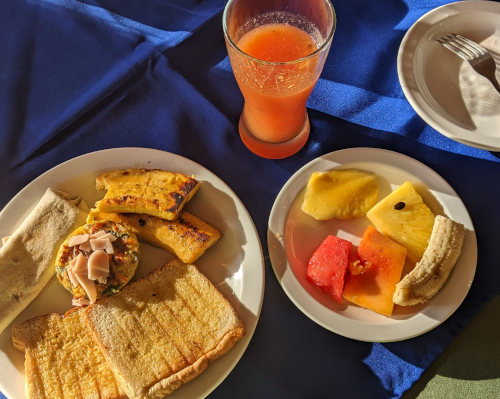
We began the day with a great breakfast with bean burrito, small egg bake cup, toast, and lots of fruit - watermelon cantaloupe papaya banana pineapple and mango - served in the open dining porch.
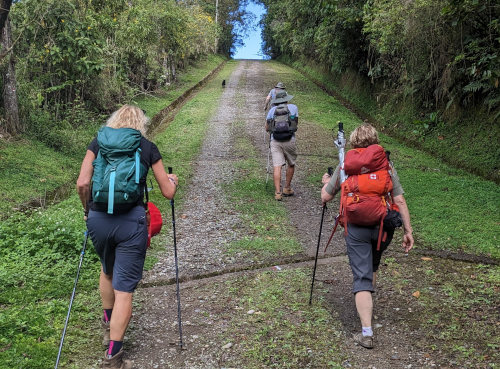
Maintaining a fairly consistent theme, our hike began with an uphill climb. We hiked up the mountain along an extensive water project that delivers water from a high mountain reservoir to the population below. Our guide explained that access to potable water is a right to all citizens of Costa Rica, and the AyA department is in charge of that. AyA is "Acueductos y Alcantarillados" - aquaducts and sewers. The path was wide and smooth, but still steep.
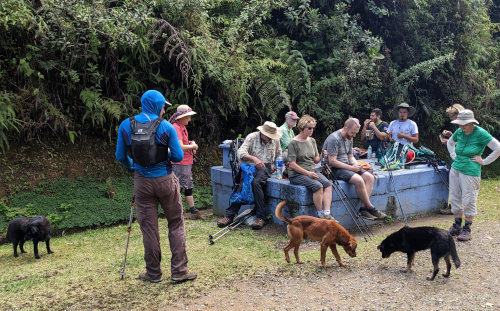
We saw quite a collection of birds through the morning, including tanningers, hawks, hummingbirds, and others. As we left town, three small dogs joined us. They guided us for our entire hike and we have no idea if they returned home or are just sleeping somewhere out there tonight. If you visit ViaLigJourneys.com, one of the dogs is in the first big photo that loads - so I expect they join many hikers on this section.
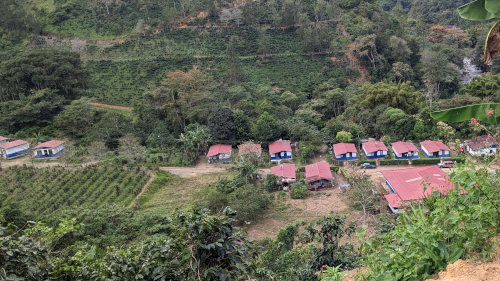
After passing over the mountain, our hike ended with some fairly flat walking across the valley and up a final draw to a lodge in the low hills. We traversed a large coffee plantation with it's own community of worker houses. Crossing a small foot bridge over a creek, we arrived in Navarro a little after 1pm - vehicles just drive right through the creek. Our hosts provided a nice lunch of vegetables and rice and then everyone got settled, took showers, and relaxed. I explored the small village of Navarro - a church, store, and soccer field - before dinner.

Today's route was a bit longer than the published itinerary, and we didn't really visit the town of Orosi. I don't think any of us missed that, since we had a very comfortable afternoon rest in a rustic lodge nestled in the forest. It is quite a bit cooler here since we are higher into the mountains. Our dinner of vegetable and sausage soup with rice was perfect for a chilly evening.
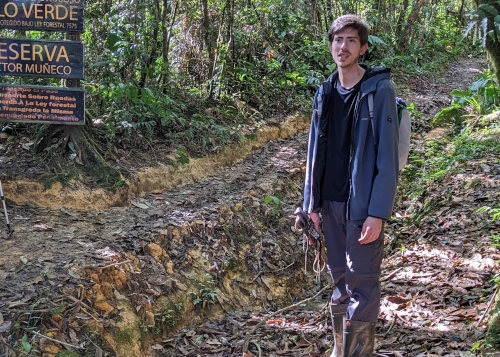
Best night of rest so far on the trip last night. We were all in a rustic lodge but the chill air and thick blankets were perfect for sleeping.
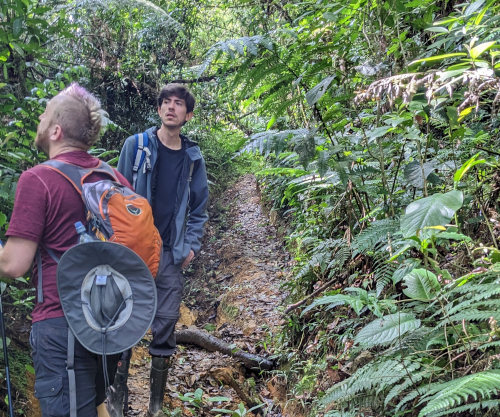
Much of today's route was on gravel road, but the highlight was a slow, careful walk on a narrow jungle trail with Nelson. He is a fungus expert and is passionate about mushrooms! His family has set aside this large tract of land for conservation so he knows it well.

Part of the trail was used in the 1948 civil war by fighters as a secret route to move equipment, and Nelson's great-grandfather was one of them. Along the way, we saw a few fungi but also some flowers, birds, and a pair of spider monkeys.
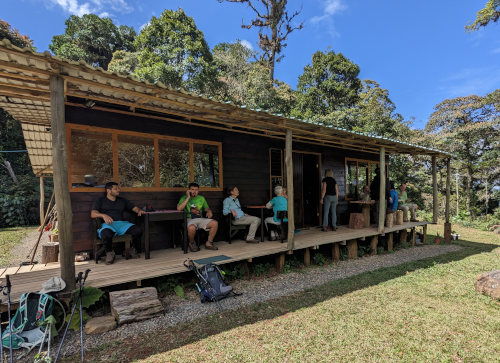
Coming out of the jungle, which was pretty much what I expected a hike across Costa Rica to be like, we visited a hummingbird garden humming with hummingbirds and then had a nice lunch at Nelson's parent's house high on the mountain looking over the valley below.
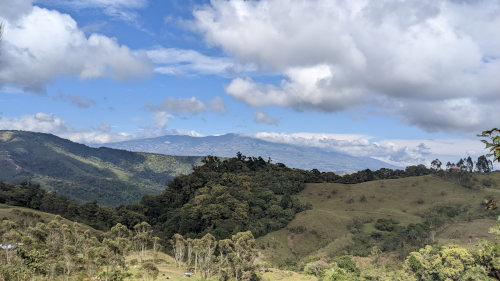
It was nice to have a short day today. For this entire two weeks, we hike every day so a couple short walks are almost as good as a zero day. The road walks were steep as usual but we seem to be getting used to them. We again avoided rain today as it sprinkled after we reached our lodging spot. And, what a spot it is!
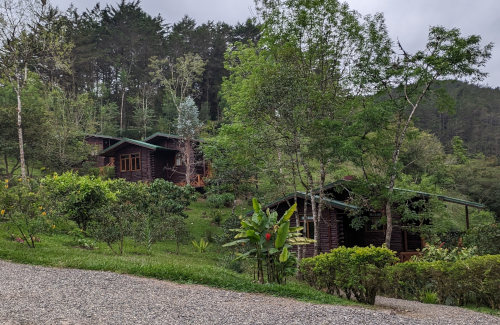
This place called Finca Verdesana is a brand new spa resort area with a gathering lodge and many beautiful cabins. They do yoga and mental wellness programs here, and it is definitely upper scale. It will be difficult to outdo this rest stop on the rest of the trek. There were many birds and even a coati to watch as we relaxed on the veranda before dinner. Dinner was salmon and potatoes and very good.
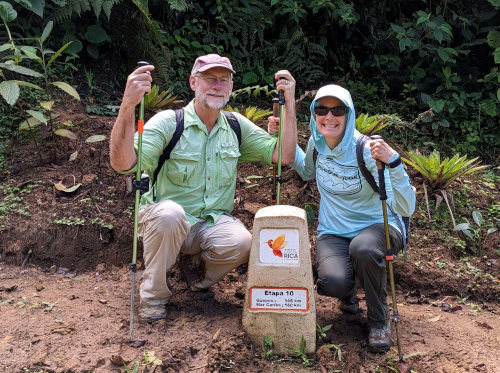
We only have 4 more hiking days so people in our group are starting to look towards the end. Two of these days appear to be our hardest, longest ones and some pains are developing, so there is icing and stretching and a little worrying going on in the group. We still haven't reached the high point of the trail!

I guess Verdesana is just too fancy for me - I had a very poor night of sleep even though everything was very comfortable. It rained much of the night but once again we woke to a clear morning, just earlier than most at 5:30 so we could start this long hike earlier. After yet another beautiful breakfast, we finally put feet to path at 7:00am.

Our usual morning climb showed an interesting rock quarry across a valley high on the far hillside. As we continued walking, we looped all the way around the mountain ridge of the valley and wound up walking right past the quarry about 2.5 hours later. One of the things I like about hiking is noticing just how much land can be covered by simply walking - landmarks far ahead eventually disappear in the distance behind you if you keep at it.
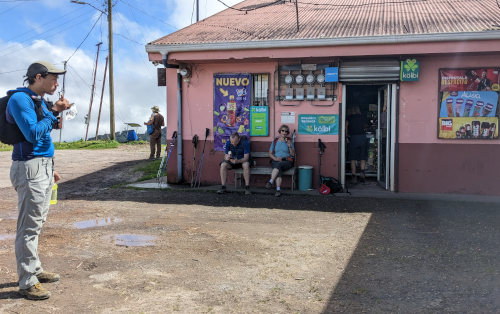
Just past the rock quarry, we were surprised with a 10:00am snack stop at a local store in La Luchita which is a small village on top of a mountain. We were told that some of the areas in Costa Rica are named after powerful people at the time, such as Luchita, and they may or may not now be powerful. We were treated to any drink and ice cream item we'd like - it was perfect after a steep climb on this warm day in the bright sun. My umbrella continues to do its magic of keeping the sun off, and I'm sure everyone is jealous of Jody and me even though they haven't mentioned it. :-)
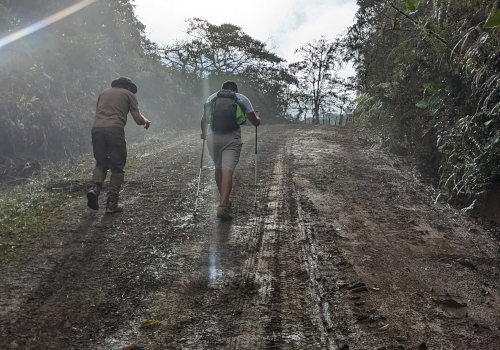
Part of this section is walking along one of the most busy roadways in the country. To eliminate most of that stressful part, we had an additional guide join us to lead us over a new dirt road that only he knows about. This new part was so steep that my heels did not touch the ground, only the balls of my feet. It appears there are no rules, or even guidelines, for road construction in Costa Rica. They are narrow, steep, rough, and windy. So, even though much of this Camino is on road, they are often more like wide trails.
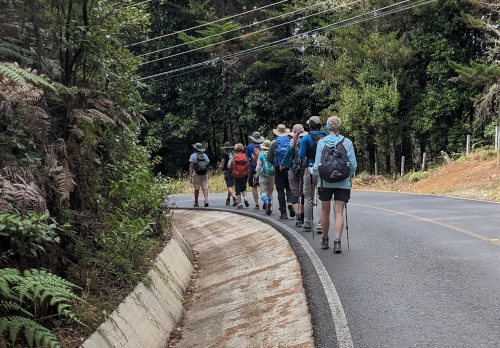
And, I greatly appreciated the new route away from the busy road. We still had to walk along busy paved roads with very little shoulder for a significant distance today - it was stressful for me. I'd say it was the worst part of the trek, with trucks roaring past just inches away. There are so many pedestrians that it seems vehicles expect them and we had no close calls, so I suppose I'd get used to it over time.
Around noon, we finally reached the highest point of the trail! It is 7670 feet (2338 meters), and is a light pole in the parking lot of a truck stop where we had a buffet lunch. So, from here, it's all downhill to the Pacific - with just a few ups and downs thrown in, I'm sure.
The afternoon portion of our hike offered up some gorgeous views out over the lower mountain ranges and villages, including steep coffee fields and amazingly tall trees. Being our longest hike, most of us were tired out by the end of our walk. About a third of our group had complaints of gastrointestinal problems or leg pains. Everyone completed our walk and I hope they are feeling better in the morning. We are staying at a nice hotel with separate cabins in a town. It's nice and quiet so I hope to have a better sleep than last night. This evening, I walked around the town, easily finding the church and soccer field just a couple blocks away.
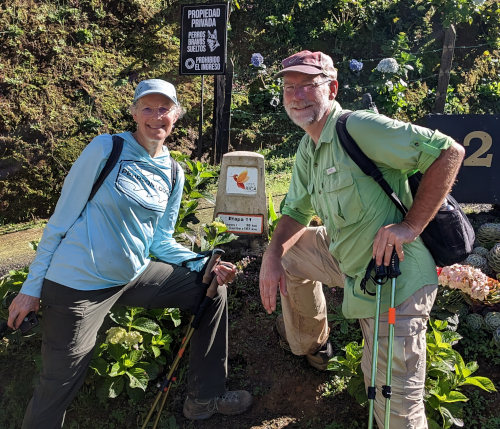
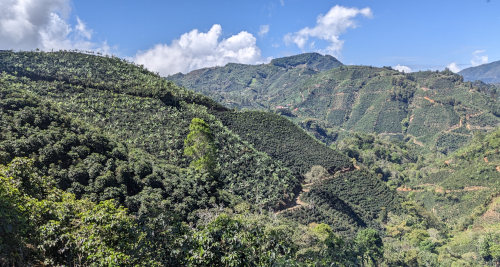
Today was a shorter 15km hike sandwiched between long yesterday and longer tomorrow. It was sort of a 'more of the same' hike with steep roads and coffee fields.
And, more coffee fields.
And, yet more coffee fields.
Get the theme? Coffee 'fields' are nothing like a field of corn or soybeans or sunflowers. These 'fields' are just plants in rows all over a hillside, no matter how steep that hillside might be. And, real people climb between the plants picking the coffee cherries by hand.
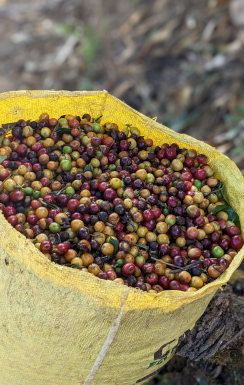
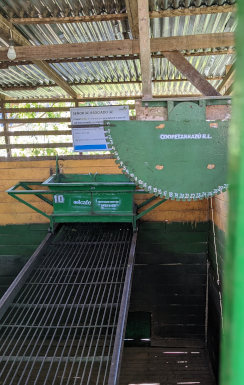
We did spend some time learning how the coffee is picked, measured, transported, and processed. Seeing actual workers laboring in the sun on the steep hillsides was sobering. We were told that many of the coffee workers are migrant Nicaraguans doing this difficult work. Pay is very low, but I've been unable to find real numbers to share. I've seen from $3/day to $50/day, so I'm not sure. No matter, it is tough work to get that steaming cup in your hand every morning.

An interesting highlight for me was to pluck a coffee cherry off a plant and eat it. They are actually just a mild fruit with two big beans (seeds) in the center. Before drying and roasting, they taste nothing like coffee. I would think there should be a use for the fruity pulp that is removed from the beans, but there seems none.
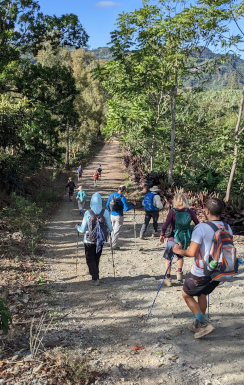
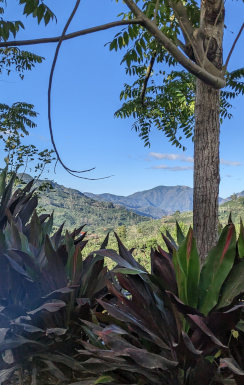
We had great, cool weather most of the day with clouds billowing all around us but no rain. The wind was very strong at points. Our hike ended with a nice lunch outdoors at a home in Napoles on a mountain with views far out over the valley. It was very cool! From there, a long shuttle ride took us to our lodging in San Lorenzo de Terrazu. Tonight, it is a private house being rented out for us all to stay in. The owners made dinner for us as part of the rental deal.
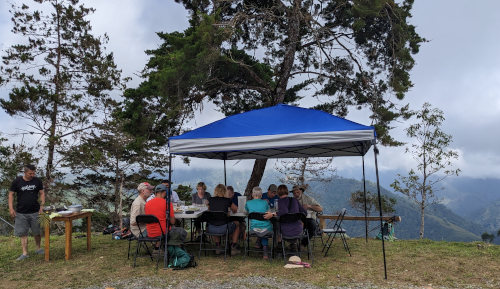
I don't think I'll ever really figure out how to get a hot shower in Costa Rica. The electric heater in the showerhead is a great idea but seems impossible for me to regulate. Not enough water and it doesn't trigger the heater, too much water and it can't heat it up - and that's for the units that are working.
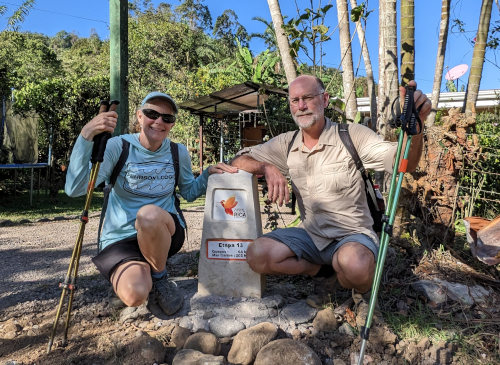
Guess what I did this afternoon - yep, walked to the store, church, and soccer field. My first encounter with someone asking for money on this trip, just a group of young guys by the store seeing if they could talk me out of some change. Just like any other place in the world, obvious foreigns should be careful in Costa Rica, especially in larger tourist areas. I had only two requests for change this entire trip and had dozens of positive interactions when passing people on the street, not counting those that were gaining from our presence.

Is it possible to have 110% humidity?
Our hike started up on a ridgeline with swallow-tailed kites riding the wind above us. It was so fun to watch them effortlessly glide on the currents blowing from the Pacific up the hills into the mountains. At about 8am, we got our first view of the Pacific Ocean 13 days after walking away from the Caribbean Sea! We had quite a conversation about how easy/difficult it would be to build a zipline from here all the way to the beaches far below.
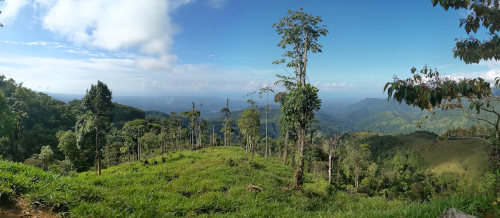
Once we began the long descent towards the coast, the humidity skyrocketed as the sun beat down, the breezes fizzled out, and the jungle vegetation closed in. Low, stifling clouds and warmth from the sun made a great sauna experience. Even though the hike was great, our support vehicle stopping with cold drinks and snacks occasionally made it much more enjoyable. Most of our hike was on remote dirt roads through lush rain forest, but 27km of mostly steep descents wore on legs that had been hiking for 12 non-stop days already.
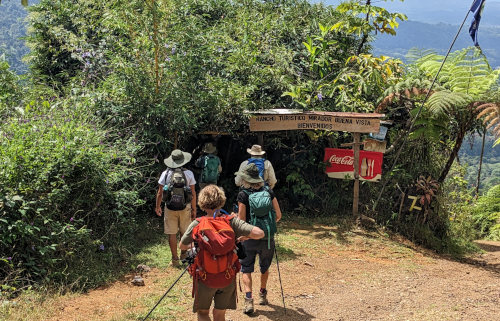
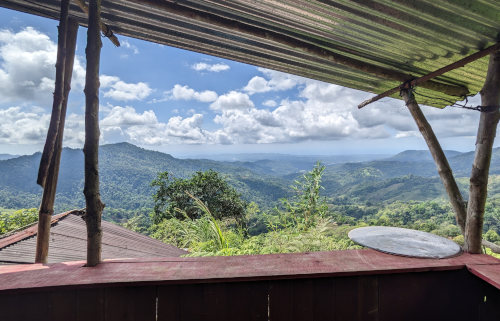
Lunch was at a very remote home of a man that left the city life to subside off the land. It was actually more of a thatch shelter than a house, with dirt floor, open walls, and a long table for us all. But, there was electricity, clean water, and toilets. It was an interesting combination of tech and primitive living. The view from his lofty shelter was absolutely wonderful down to the ocean, still many miles away. The home grown vegetable meal was also delicious. After lunch, he led us on a faint jungle trail back to the main route. In this thick jungle, the humidity was obvious and did not let up until the end of the day.

With occasional glimpses of the coast to motivate us, we hiked on, eventually reaching a most wonderful destination for the night. Did I mention the humidity? I really prefer arid over humid.
This fellow named Rudy has created a bird sanctuary to conserve lands and educate people, and it has been his passion for years now. Rudy is the most effervescent Costa Rican I've met, y'all! This refuge is over 100 acres of land set aside from encroachment and open to visitors to learn about pretty much all things conservation-minded in Costa Rica. He is well-versed in his country's conservation decisions and challenges, and more than willing to share with visitors. Rudy and his great small staff worked hard to provide a memorable experience. And, they have the best hot shower that I've had in the past 2 weeks!
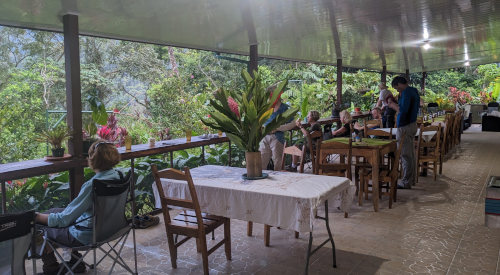
After a nice chat about conservation and a most wonderful chicken dinner on a large patio watching miriad birds stopping to eat at feeders, it has cooled down considerably, the humidity has dropped, and is now finally pleasant. But, honestly, I believe today was probably the most humid hike I've ever done. The jungle was alive with the sounds of cicadas and birds at times, and this is what I was expecting when contemplating a hike across Costa Rica. I'm just glad every day was not humid like this one.
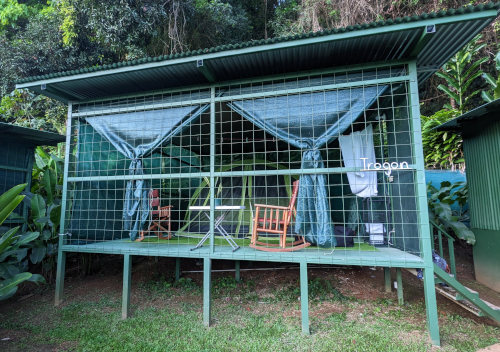
Our lodgings are tents inside permanent cages with roofs on wooden platforms. The cages are for a sense of security for visitors since there are animals about. An electric fan in the tent moved the air and made for a very comfortable night's rest.

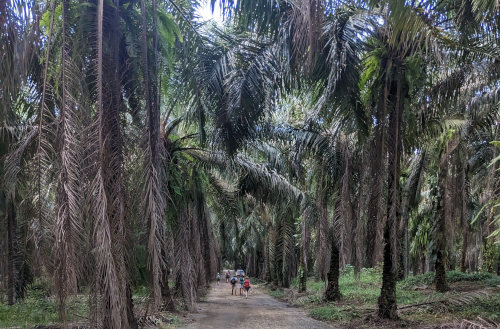
I thought yesterday was hot and humid, but today wins! We dropped down the last few hills before a 12 mile walk along dirt roads through vast palm oil forests and then paved roads through small towns in the coastal flatland. It was mostly a grind with not a lot of views, avoiding traffic and keeping the feet moving towards the coast.
We did stop at a store for fresh coconut water - a straw poked in a hole in the coconut! That was refreshing. And, we watched our first macaw fly over and rustle about in a tree by a soccer field.
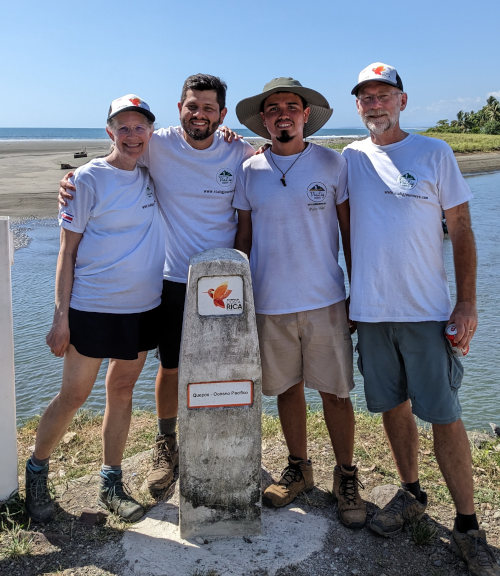
Reaching the end of the trail around 1:30 at the ocean in Quepos was sudden and fulfilling. With no more land to walk on, we could take our time the rest of the day relaxing and enjoying our success. Our hotel was a block off the beach so we cleaned up and enjoyed the air conditioning before gathering for a fun dinner at an outdoor bar.
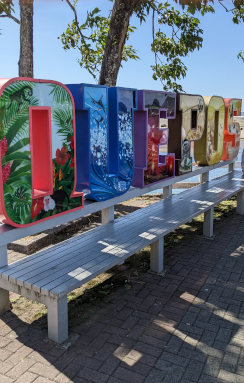
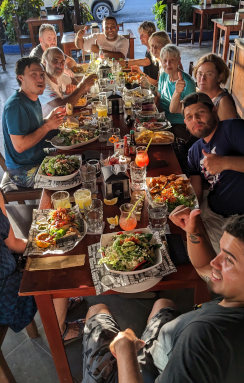
.
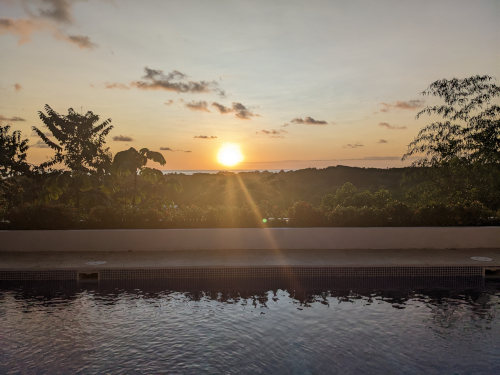
On Sunday, everyone gradually departed for their homes or next adventures throughout the day. We found our way to Jan's home up on the hillside above Quepos where we stayed for 3 nights. The view of the sunsets over the ocean were specatacular every night, as were the many kinds of birds that flew past. We even had a troop of monkeys pass through in the tree branches on their way to feeding.
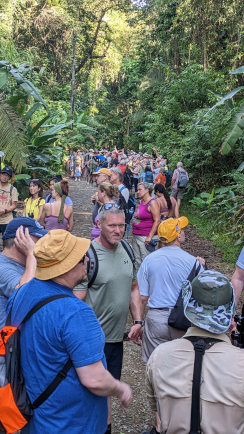
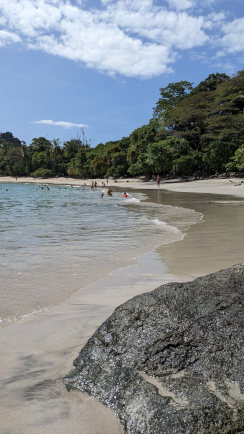
Monday was spent on an animal tour of the Manuel Antonio National Park. Our guide, Michelle, was terrific and we joined about 600 other people looking for sloths, monkeys, birds, and reptiles. After the tour, we stayed and played on a beach for a few hours before taking a public bus back to Quepos and then walking home. By now, we have the route down and stop at a local grocery store to get snacks on the way home.
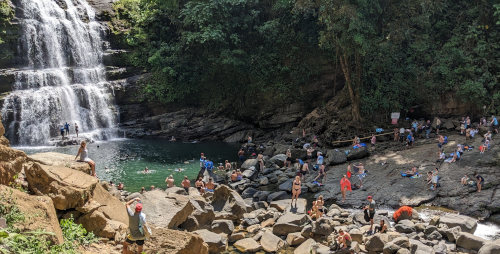
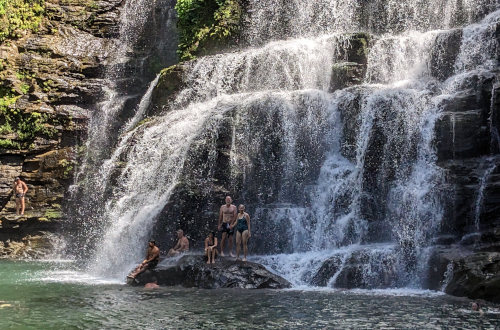
Tuesday was filled with a 2 hour shuttle ride and then guided walk to Nauyaca waterfall where we swam with 100 others. Actually, we were two of the few that actually swam - most were just Instagramming it. It was fun, but expensive and 4 hours of travel. Back home, we enjoyed one last sunset over the Pacific.
Wednesday into Thursday was just travel. A 3+ hour bus ride to San Jose where we waited 5 hours for our night flight. Then, over night to NYC and another flight to MSP. Luckily, I slept more than I expected and all our Costa Rican chocolate gifts for folks back home made it just fine.
Here's some advice that might help in planning your Camino de Costa Rica hike...
 Wild Food: Let your guide know that you'd like to sample bananas, sugar cane, coffee cherries, and any other food crops that might be ripe when you are hiking through. It's a treat to chew on a piece of sugar cane while walking through a sugar plantation.
Wild Food: Let your guide know that you'd like to sample bananas, sugar cane, coffee cherries, and any other food crops that might be ripe when you are hiking through. It's a treat to chew on a piece of sugar cane while walking through a sugar plantation.
 Umbrella: My umbrella was by far the most useful item I brought along. I used it almost every day to protect from the sun, and it provides rain cover without the heat and sweat of a raincoat in such warm, humid environment. Since much of the hiking is on very wide, open trails, it did not get tangled in brush. I did have a raincoat along, but never used it.
Umbrella: My umbrella was by far the most useful item I brought along. I used it almost every day to protect from the sun, and it provides rain cover without the heat and sweat of a raincoat in such warm, humid environment. Since much of the hiking is on very wide, open trails, it did not get tangled in brush. I did have a raincoat along, but never used it.
 Showers: Homes have only cold water lines, no hot water heaters. For hot showers, an electric heater is installed right on the showerhead to heat the water just as it comes out. Most have a 3 setting switch - cold, warm, hot - on the shower head. If you have the water on too little, it does not trigger the heater. On too hard, and there is too much water passing to get heated. So, it's a tricky balancing act every time, and that's assuming the heater is even working.
Showers: Homes have only cold water lines, no hot water heaters. For hot showers, an electric heater is installed right on the showerhead to heat the water just as it comes out. Most have a 3 setting switch - cold, warm, hot - on the shower head. If you have the water on too little, it does not trigger the heater. On too hard, and there is too much water passing to get heated. So, it's a tricky balancing act every time, and that's assuming the heater is even working.
 Water: Potable water was not a problem. We drank from faucets in all the places we stayed. Three out of nine people had some digestive system problems that lasted about a day, all about the same time, so it may have been the water at one place, or the food, or something else.
Water: Potable water was not a problem. We drank from faucets in all the places we stayed. Three out of nine people had some digestive system problems that lasted about a day, all about the same time, so it may have been the water at one place, or the food, or something else.
 Toilets: In Costa Rica, the sewer system is usually very basic and even toilet paper can clog it up. So, used toilet paper goes into a small trash can by the toilet, not into the toilet itself.
Toilets: In Costa Rica, the sewer system is usually very basic and even toilet paper can clog it up. So, used toilet paper goes into a small trash can by the toilet, not into the toilet itself.
Back to Camino de Costa Rica Info page.
Read the Journal of FirstWeek on the trail.
Find more Hiking Resources at www.HikingDude.com


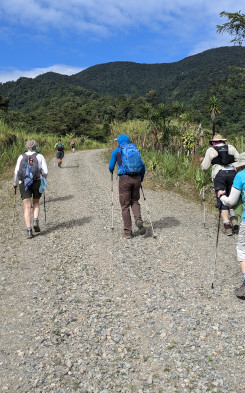
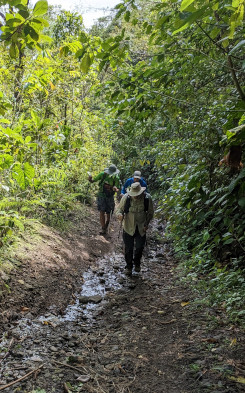

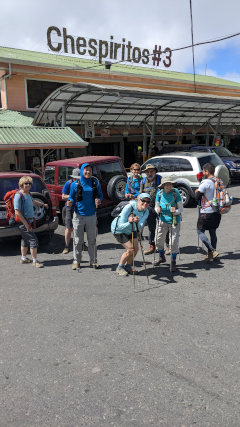
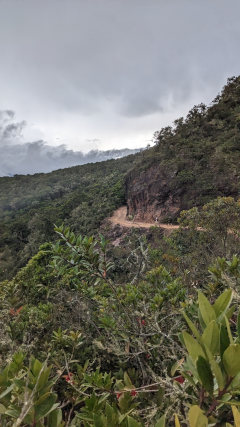
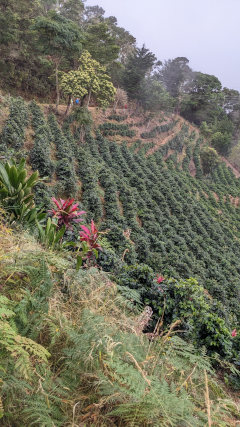
Follow Me
Recent Comments